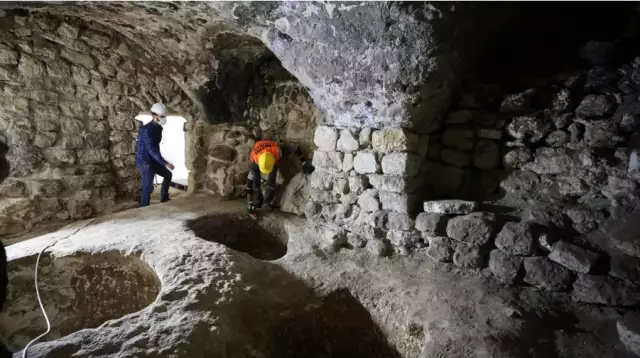A 4.6 billion years old meteorite found in the Sahara Desert
Scientists are still trying to figure out how a 4.6 billion-year-old meteorite rock found itself in the Sahara desert. The rock was discovered in May 2020 in the middle of the Sahara in Adar Algeria. Since its finding, the rock has been under study and scrutiny to help scientists piece together the history of the universe.
In a study published by Proceedings of the National Academy of Science (PNAS), scientists have described the look, nature and composition of the rock named Erg Chech 002 (a.k.a. EC 002). The rock is described as having a tannish coarse appearance. The rock is also decorated with yellow-green and yellow-brown crystals throughout. The rock has a unique composition that intrigues even the scientists that have been working on it.
Related: New technology harnesses atmospheric water in deserts
The study shows that the rock has been found to have a sufficient amount of andesite, a volcanic rock only found on planet Earth. Andesite is formed when tectonic plates collide. This compound makes the recently found rock distinctly different from the basalt meteorites that are common on our planet.
According to scientists, EC 002 was once molten, however, the fact that the rock must have been formed over 4.565 billion years ago raises more questions. For a long time, it has been generally agreed in the scientific community that the earth was formed 4.543 billion years ago.
Scientists say that understanding the rock is quite difficult, given that there aren’t many similar formations on earth. However, they say that it provides plenty of insight into the formation of the earth and the entire universe at large.
Scientists now believe that the rock might have been formed during the breaking of protoplanets. The theory of protoplanets is among the many theories that have been put forward to explain the formation of our planet. As a matter of fact, most of the theories that try to address the matter of planetary formation refer back to the protoplanets theory.
According to the researchers, the rock provides some clues to what might have happened to the protoplanets. They say that protoplanets might have been destroyed before the planetary system was formed. On the other hand, there are those who suggest that the protoplanets might have merged with other planets. Either way, it leaves more secrets of the universe to be uncovered.
Via Grunge
Lead image via Pexels






